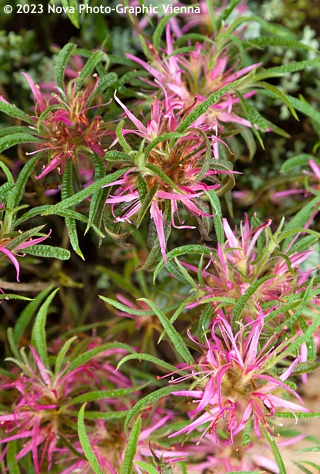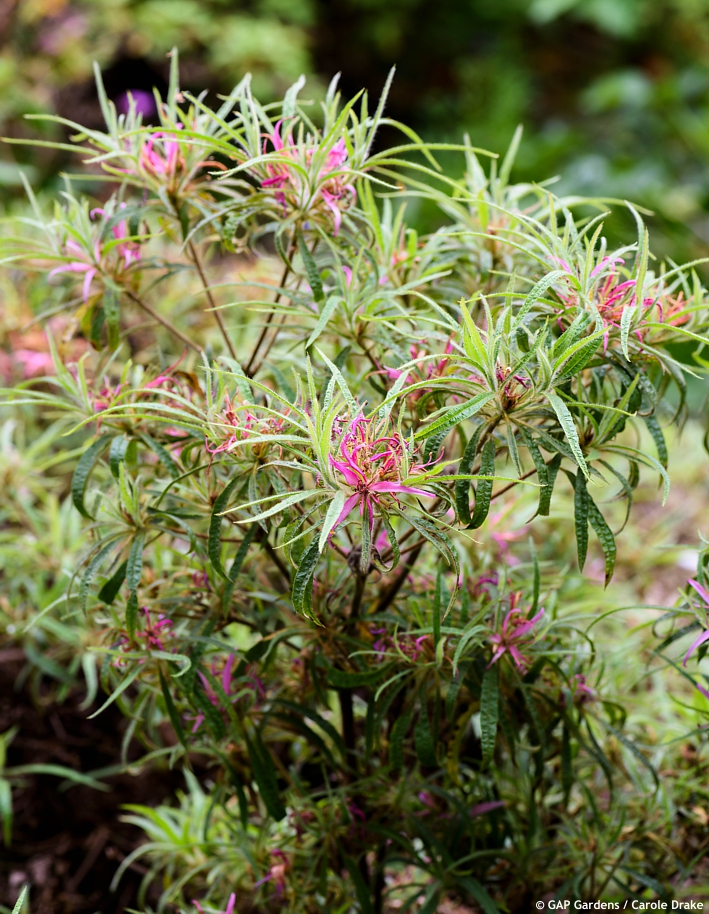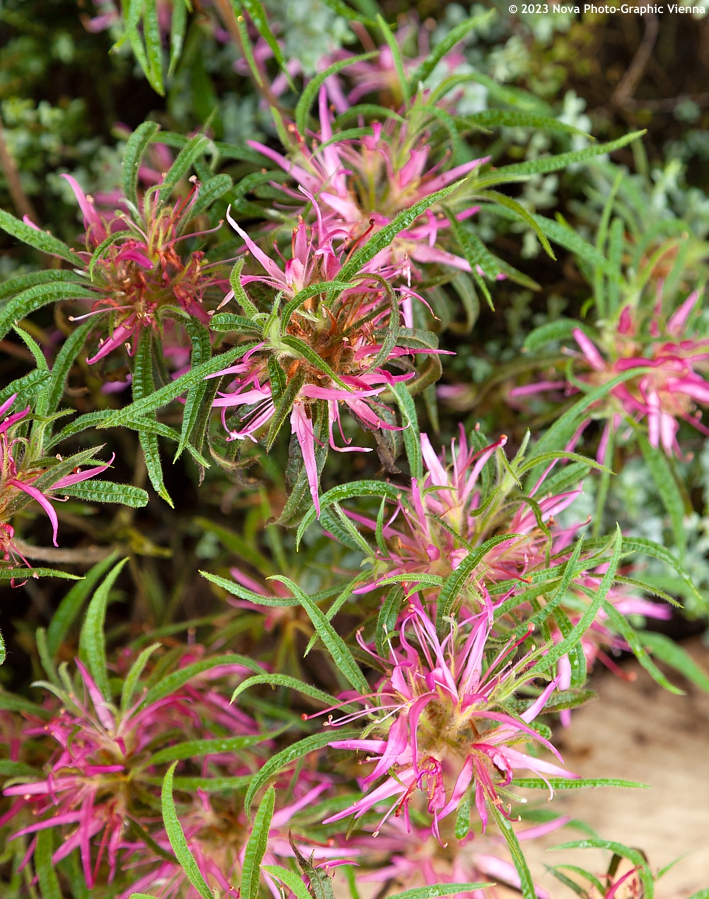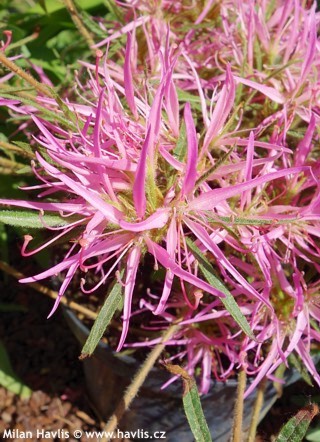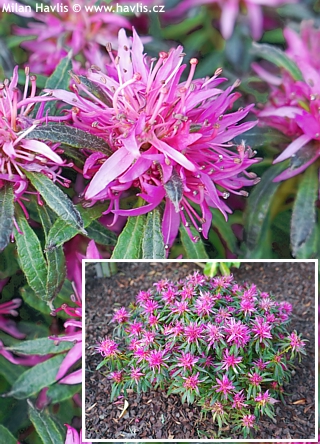Rhododendron stenopetalum 'LINEARIFOLIUM' spider azalea
Rhododendron
Rhododendron stenopetalum is a rare evergreen to semi-deciduous azalea with thin flower petals and linear leaves thanks to which it is called spider azalea. It is native to Japanese islands Honshu and Shikoku.
Linearifolium is probably the oldest selected variety of this unique so-called spider azalea. It is special for its extra narrow petals and leaves. The flowers are medium pink and slightly fragrant. Blooming begins in May and lasts for 2-3 weeks. Its leaves are semi-deciduous, narrow to almost linear, dark green, rather matte, slightly hairy, and tinged deep maroon from winter until late spring. They remain evergreen through mild winters and after cold winters they dry out and are replaced with new foliage after flowering.
Annual growth is only between 10 and 2 cm and the plant forms a somewhat irregular habit. Its branches are quite fragile therefore we suggest using a protection against passing animals. Thanks to delicate flowers and fine foliage it looks exotic and will suit any garden of such style.
Semi-deciduous azaleas are ericaceous plants which, just like their Japanese sisters, prefer semi-shaded position sheltered from the hottest midday sun, and constantly moist soil. During temporary summer dry spells in certain areas their leaves may suffer and be prone to fungus infections. When spots appear on the leaves or they lose colour and start to curl use a suitable fungicide immediately. 1-2 sprays should help the plant remain beautiful and healthy. They require no pruning. Should you need to shape or rejuvenate your plant do so as early in the spring as possible so that it can still make new twigs with flower buds for the next season. It re-sprouts reliably. It has many surface roots which spread to sides in search for nutrients and water. The best soil mixture consists of peat, lime-free compost and leaf-mould. Hardy to at least -24 °C (USDA zone 6).
Last update 30-05-2023

































